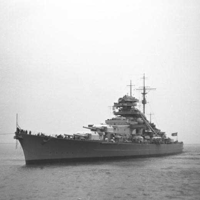Seventy years ago yesterday, the Royal Navy battlecruiser the HMS Hood was destroyed by the German battleship the Bismarck, striking the British national security apparatus with panic. Although the Hood was 20 years old when it faced off against the Bismarck, it was still one of the largest, fastest and most powerful warships in the world. It was also the most visible symbol of British naval power, having conducted many "show the flag" cruises during the interwar period.
The loss of the Hood inspired an intense, emotional desire for vengeance on the part of the Royal Navy, as well as trepidation in the Churchill government about the political effect of failing to find Bismarck. The subsequent brief but intense pursuit resulted in the Bismarck's destruction at the hands of British battleships three days after the loss of the Hood.
At first glance, the sinking of the Bismarck may seem to have little relevance to the U.S. pursuit and killing of Osama Bin Laden. But although the two events differ in respects too numerous to be counted, they have certain similarities that resonate: Both came to have symbolic meaning that dwarfed their material impact, and both, in the end, raise questions about the rules of war governing surrender.

